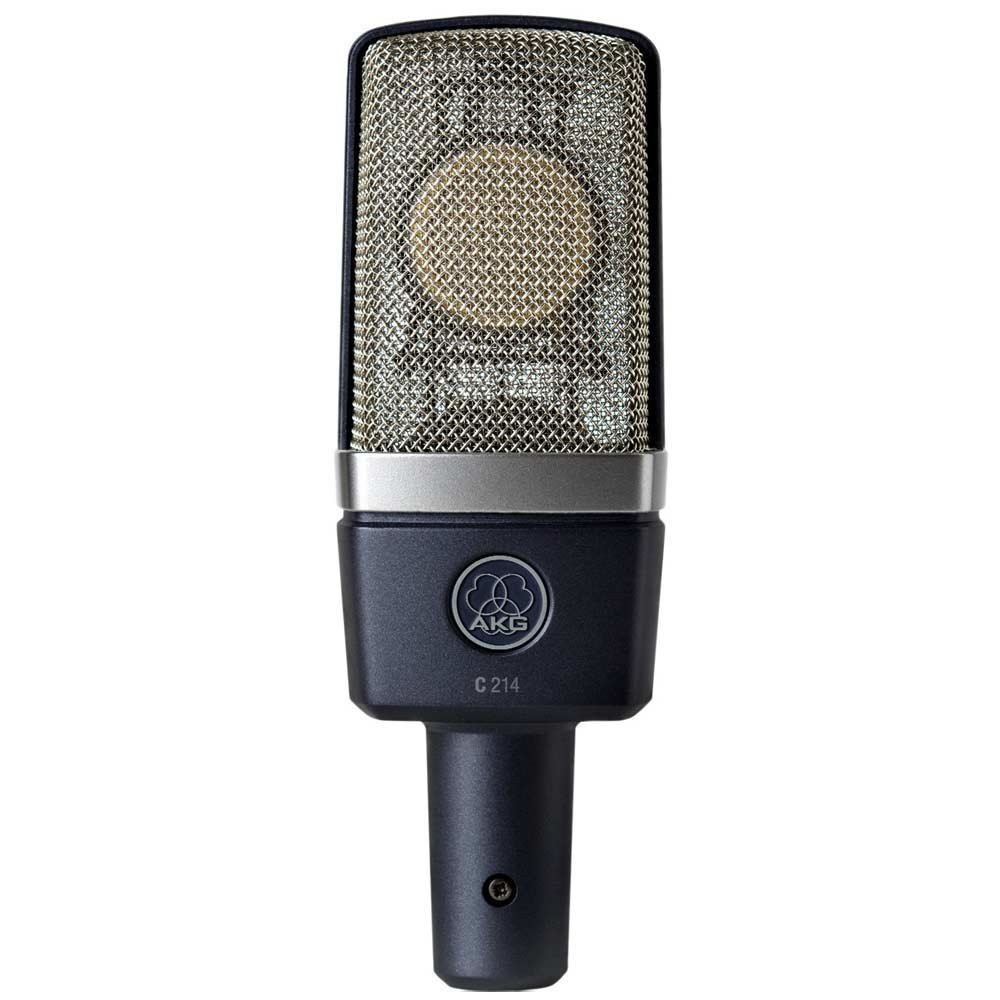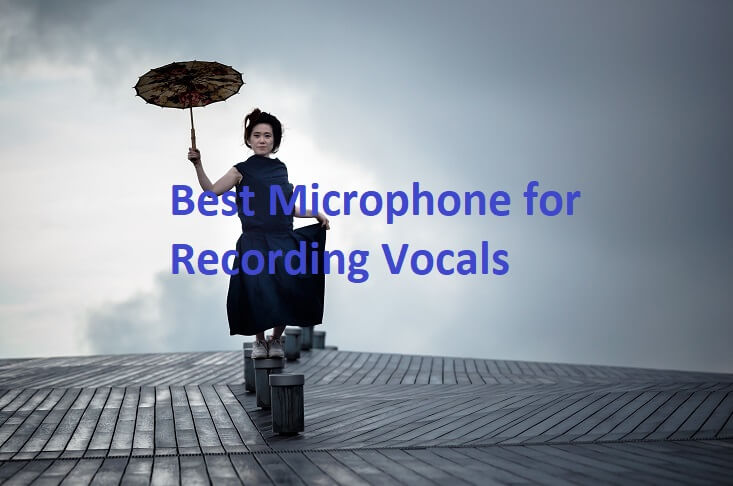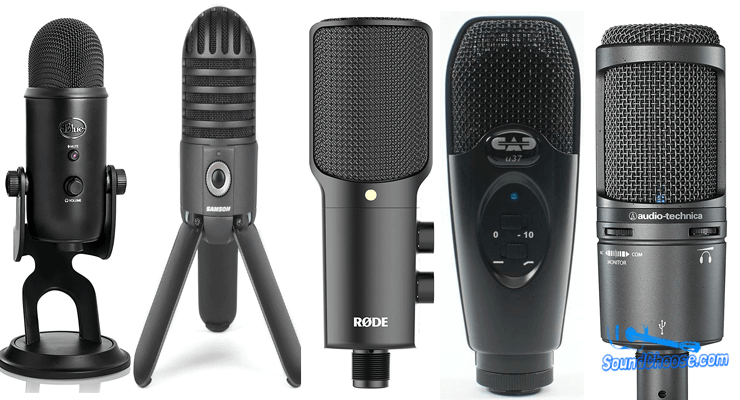The quality of your podcasts would normally come down to the quality of the mic with which you record them. A number of microphones are available in the market for this purpose. It may seem a daunting task though to find your perfect pick among this. We’ve then taken our time to review the best podcasting mics available and this article, we present to you with the best podcast microphone can boast of so far.
These mics are listed below in no particular order of quality efficiency but all five are among the best you could get right now.
Top 7 Best Podcasting Mics comparison chart
| Picture | Name | Type | Price | Rating |
|---|---|---|---|---|
 | Samson Q2U Microphone | Dynamic | Check Price | 4.1 |
 | Blue Yeti Microphone | Condenser | Check Price | 4.4 |
 | Rode Procaster | Dynamic | Check Price | 4.6 |
 | Heil PR40 Microphone | Dynamic | Check Price | 4.2 |
 | Audio Technica ATR2100 | Dynamic | Check Price | 4.2 |
 | MXL 990 Condenser Microphone | Condenser | Check Price | 4.2 |
 | Shure SM7B Condenser Microphone | Dynamic Cardioid | Check Price | 4.7 |
1. The Samson Q2U Microphone: The Best Cheap Podcast Microphone
Our Rating:  (4.5 / 5)
(4.5 / 5)
The Samson Q2U microphone is the ideal entry-level mic anyone can use for an upgrade over most of the other cheaper choices as well as an improvement over internal microphones. At a price that seems very affordable, the Samson Q2U microphone is both XLR and USB compatible. The Q2U retails for one of the lowest prices but many people will feel it’s a cheap podcast microphone.
Features & Description
Pros
- The Q2U produces a rich and boomy sound.
- Its pricing is one of the most affordable.
- The build quality is impressive.
- It is very easy to use and connect through USB or XLR.
Cons
- You’ll need a few other accessories to enjoy this mic maximally.
2. Blue Yeti Microphone
Our Rating:  (4.4 / 5)
(4.4 / 5)
From one of the cheapest of the best podcasting mics you can get elsewhere, we move a notch higher to the Blue Yeti Microphone in its excellence. The Blue Yeti offers one of the best sound qualities you’ll find in podcasting microphones.
The microphone is pretty easy to use and does a good job of sound delivery no matter what equipment your computer uses. The mic comes with its own stand and if you’ll like to jump in at a higher end, this amazingly easy to use mic may be your top choice.
Features & Description
Pros
- Easy to setup and use.
- The Blue Yeti is still affordable.
- Sound quality is excellent.
- USB connection for easy computer or mobile connection.
- It is available in several colors.
Cons
- The Blue Yeti seems a little large.
- Since it is a condenser mic, you’ll really need to make sure you don’t have background noise that could be easily picked up.
3. Rode Procaster: The Best Mid-range Podcasting Microphone
Our Rating:  (4.6 / 5)
(4.6 / 5)
The Rode Procaster comes in as one of the high-end but still relatively affordable best podcasting mics. It is in a league where the best are often the most expensive but the Rode Podcaster mic still manages to fuse top quality with reasonable affordability. The Rode Podcaster is an excellent podcasting choice and does not require phantom power unlike it’s the condenser microphones.
There is an inbuilt pop filter to help filter out plosives and so when you compare this mic to the Samson Q2U and the other entry-level options, you find out there is a significant difference in quality.
Features & Description
Pros
- Sound output is excellent
- The build is top quality.
- Excellent dynamic mic with perfect noise rejection
- 10-year durability warranty.
Cons
- It seems a little on the quiet side.
- You still experience minimal plosives despite an inbuilt pop filter.
4. The Heil PR40 Microphone Review
Our Rating:  (4.2 / 5)
(4.2 / 5)
The Heil PR40 has a design with great semblance to condenser microphones but this mic is an excellent dynamic mic with attributes and characteristics that make it one of the best podcasting mics to handle voices, bass instruments, guitar, and much more.
It is in the same league as the Electrovoice RE20 as well as the Sennheiser MD421 as far as performance is concerned. The Heil PR40 is assembled and designed at the Heil Sound’s facility in Ilinois and this flawlessly designed microphone has got some amazing features and specifications that we’ll outline below.
Features & Specifications
Pros
- The mic has a good balance of sound, size, and background noise.
- It is perfect for podcasting as well as deep bass voices.
- The sound output is really awesome.
- Excellent output at both low and high frequencies.
- Beautiful design and construction.
Cons
- You’ll need a mixing board or preamp to maximally enjoy the Heil PR40.
5. Audio Technica ATR2100 Review
Our Rating:  (4.2 / 5)
(4.2 / 5)
The Audio Technica ATR2100 microphone is designed to perfectly handle voice over, online tutorials and all other forms of podcasting efficiently. The microphone has won several industry awards and recognition for quality performance and durability. It is a dynamic microphone that is held in high regards by most sound experts and enthusiasts and it’s no doubt a qualified member of the best podcasting mics.
We’ll discuss below some of the features that have made the ATR2100 the preferred podcasting choice of many.
Features & Specifications
Pros
- The microphone is quite affordable
- Sound reproduction is excellent
- ATR2100 is lightweight at 9.5oz and still comes with a tripod stand.
- The microphone is compatible with both Windows and Mac.
Cons
- You’ll need to get real close to the mic to get a perfect sound reproduction.
- The tripod stand is lightweight and needs to be handled with care.
6. MXL 990 Microphone
Our Rating:  (4.2 / 5)
(4.2 / 5)
For enthusiasts looking to go pro and wet their feet, the MXL seems a great choice for such adventure. This condenser mic comes with great features and an excellent sound reproduction that is not just awesome but qualifies it as a worthy contender on our list of the best podcasting mics available for great podcast sessions.
Features and Specifications
Pros
- Rich and very clean sound
- Perfect for treated environments like home studios.
- Comes fitted with shock mount.
- Great for recording with acoustic instruments.
- The microphone has a great low end.
Cons
- A little bit too warm for close up vocal recordings.
- Not clearly defined in the mid-range.
7. Shure SM7B Condenser Microphone with Shockmount
Our Rating:  (4.7 / 5)
(4.7 / 5)
A legendary microphone from Shure that many enthusiasts and industry experts will be familiar with, the Shure SM7B is arguably the best podcasting mic in the market and though it is on the higher end, it justifies the price tag it carries with unequaled sound reproduction and quality output.
This dynamic microphone has been the choice of both professional and enthusiasts and it’s definitely one of the most popular and loved microphones. The microphone no doubt has some great features that make it the favorite of lots of people and we’ll describe some of those features in the following parts of this article.
Features and Specification
Pros
- Sounds from the SM7B are clear and vibrant
- It is easy to use and does not need external shock mount or pop filters.
- The sound isolation is nice.
- The mic does not get too hot like condenser mics.
Cons
- You’ll definitely need a decent mixing board or preamp to get full use of the SM7B.
How to Choose the Best Podcasting Microphones
We said it just now that the available budget and your recording environment will determine the type of podcasting mic that will suit you. This holds true but you may also decide to spend as much as you can truly afford.
While expensive does not always mean better, microphones for podcasting are always better in quality as the prices go up. All of the best podcasting microphones on our list are highly durable and comes with lengthy warranties so you can be really assured you’ll get your investment’s worth.
Characteristics of a Good Podcasting Microphone
Whatever the type of microphone you want to buy, there are these three major things you should look out for. We’ll briefly discuss each of these in the following lines. Whenever you embark on the purchase of your best podcasting mic, be sure you have these features covered.
Cardioid Pickup Pattern
This will help to reduce noise and disturbances coming from the sides while focusing on the real sound input. Microphones that are deemed cardioid are not sensitive to the noise from the sides of the sides or back of the microphones. This then helps to reduce noise from the background. Microphones with tight pickup patterns would also require you to be close to them so the sound reproduction could be loud and clear.
Shockmount System
This feature helps to filter out vibrations at low frequencies that may arise from touching the table or using the keyboard while the microphone is live.
Pop filter
This helps to prevent popping Ps. This is usually in the form of a foam that is acoustically transparent used as a layer inside the mic or externally between the mic and the source.
Differences between Dynamic mics and Condenser Mics
We’ll try to keep this simple as possible as we can. The major difference between these two lies in their handling of background noise. While condenser microphones will clearly depict the faintest of sounds from several angles of your recording space, dynamic mics are designed as mono-directional and they reject sounds coming from other angles.
For podcasting, the dynamic microphones seem the best. These microphones though are a little quieter than condenser mics.
Should I use Condenser Mic for Podcasting?
Depending on your recording environment, it may or may not be advisable. Condenser mics such as the Blue Yeti microphones are multi-directional and picks up sounds from different angles, unlike dynamic mics. This means that the sound of a truck passing outside your recording studio as well as the sound of your children playing in the other room will be clearly documented.
Nevertheless, condenser mics seem the best microphones at producing effortlessly rich sounds and if you are able to treat your recording environment and make it dead, condenser microphones can provide you the needed podcasts without interruptions and distortions from background noise.
Final Thoughts
Choosing your best podcasting mic will come down to two things, your recording environment, and the available budget. While the quality of sound these mics produce may seem to be unequal, the Samson Q2U that seems a cheap podcasting microphone still delivers excellent sound reproduction.
That is not to say it is the same as the Heil PR40 or the Rode Podcaster microphone. These two seems on the professional side and offers some of the best quality you can get from your podcast sessions.













Leave a Reply
You must be logged in to post a comment.